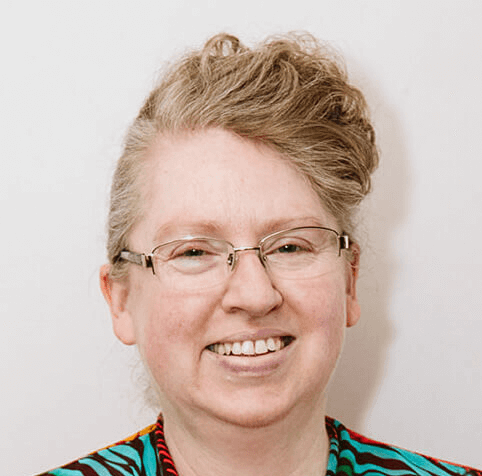Liane Grant
Part-Time Faculty, Translation
Blended Learning Couse Design, Translation

FTRA200, Translation Methodology
Approx. 30 Students Maximum
This is the first course students take entering the Translation program. Most students don’t have any experience with translation.
Why did you choose to blend your course?
Liane had been experimenting with blended learning before the pandemic, so it was a natural progression for her to return to blended once we got back to campus. Liane expressed the main benefit of blended as the flexibility it offers both instructors and students.
What does your course look like?
For this particular course, there were four main modules that covered the three broad topics of the course and a final application module. For each module, the students worked online for2-3 classes then met in person for the last class of the module. In an end of course survey, students noted that they liked the format of the course and that the balance of in-person and in-person sessions was good.
What kinds of teaching/learning activities take place in the asynchronous part of the course?
Every week, there were short readings and/or video lectures to watch on Moodle via YuJa for which she also provided the PDF copies of the slides. This was followed by a quiz and translation application exercises. Students also did ungraded practice translation activities related to the target content skills for the module for which Liane gave detailed feedback.
What kinds of teaching/learning activities take place in the classroom?
The class sessions were intended as a consolidation for the module. Liane provided a brief lecture where she clarified any questions or confusion then students moved to a group application activity to refine their knowledge and skills for the module. The lesson finished with a quiz to assess students’ progression.
How do your students benefit from blended learning?
In a course survey, an overwhelming majority of students indicated they preferred the blended format; the comments suggest that they benefitted greatly from the flexibility of anytime, anyplace learning at their own pace.
Liane also believes that the one-to-one feedback she was able to give students each module on their ungraded translation activities was really beneficial to give each student the specific support they needed, which she would not have had time to do in a regular course.